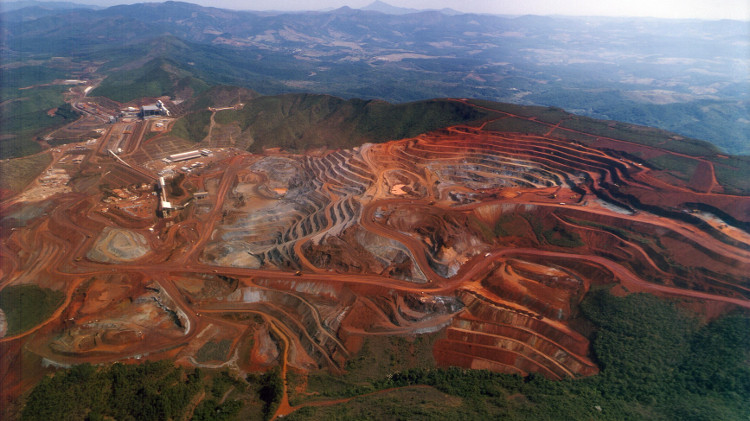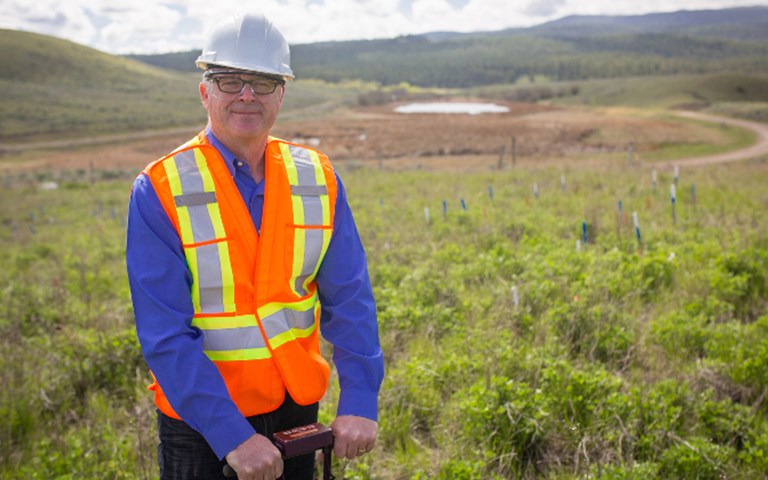Thompson Rivers University researchers Lauchlan Fraser, pictured, and Jon Van Hamme hope to better understand soil microbial communities and their role in ecosystem function by using genomic tools. Courtesy of Lauchlan Fraser
A project by two Thompson Rivers University researchers to use genomic tools to find faster ways to return mine sites to self-sustaining ecosystems received $250,000 from Genome BC, the organization announced in late November.
Lauchlan Fraser, professor of biological sciences and the Canada Research Chair in Community and Ecosystem Ecology, and Jon Van Hamme, associate professor of microbiology, will conduct research at New Gold’s New Afton, Teck Resources’ Highland Valley Copper, Avino Silver and Gold Mines’ Bralorne and Imperial Metals’ Mount Polley.
The researchers hope to better understand soil microbial communities and their role in ecosystem function by using genomic tools. It will expand on the barcoding work done by Paul Hebert, the director of the Centre for Biodiversity Genomics at the University of Guelph, at New Afton to identify invertebrate species, Fraser said.
“So we can use our genomic tools for meta-barcoding, taking soil and extracting DNA, amplifying it, sequencing it and determining what species are present,” he said. “Different microbial species have been linked with different functional roles, and so that’s sort of a first step to understanding the functional role of the microbial community.” The researchers will also be looking at sites that have been restored for things like soil characteristics, structure and development, and the microbes within the soil.
The plan is to create benchmarks for biodiversity so that they can monitor the sites over time to determine whether they are “following the right trajectory” towards restoring the area’s original biodiversity, Fraser said.
Catalina Lopez-Correa, Genome BC’s chief scientific officer and sectors vice-president, said the project appealed to Genome BC because of its focus on “soil bioremediation, ecosystems and bio-reclamation.”
Related: UBC research aims to remediate problematic oil sands process water
Fraser said the four mine sites were chosen because of previous relationships. “I’ve been working with New Afton for more than five years now, and Highland Valley Copper we also have a long-term relationship with,” he said. He was involved with research at Mount Polley after its tailings dam breach to use genomic tools to understand the impact of the failure on the environment. Bralorne is a newer partnership, he said.
“One of my objectives is reaching out to other mines and trying to increase our partners,” he said, “because with more mines, we…can get a better handle on how sites’ geography and geology may impact or influence these successional development patterns.”
The funding for the project came from Genome BC’s Sector Innovation Program (SIP) and will last for 18 months. Fraser said they began sampling work in June. Three other projects, from the forestry, agrifood and environmental sectors, also won funding under the program.
In order to be selected for SIP funding, projects must go through an external peer review committee, and compete against projects in multiple sectors that Genome BC has identified as areas of interest.
“Seven years ago we decided we wanted to make sure the mining sector was really getting a benefit from and learning and using genomics,” said Lopez-Correa, “so it’s a priority for us and a promise.”
Lopez-Correa said that in comparison to other sectors, genomics applications in mining started late – about five to seven years ago – but are “developing very, very fast.” She said many of the majors, like Teck Resources and Goldcorp, are using genomics to improve their “competitive advantage. It also helps them fulfill all the requirements they have in terms of bio-reclamation, remediation and green technologies.”
For smaller funding opportunities like the SIP, Genome BC receives funding from the provincial government. For larger initiatives, which could give out as much as $10 million per project, it receives a third of the funds from the federal government, a third from the provincial government, and a third from the private sector. Since Genome BC was founded in 2000, it has funded 13 mining and energy projects and invested a total of $34.7 million.
Fraser said he has applied for NSERC’s Industrial Research Chair, which would allow him to continue the research for the next five years. “The funding from Genome BC is an excellent starting point, but we need more research around monitoring and an 18-month window is not really a monitoring project,” he said. “But it does give us that pilot data to move forward.”




